Does your hydrangea have yellow leaves? A nutrient deficiency could be the problem, experts warn, but you can fix it with 1 simple test
Discover the potential causes for discolored foliage on these backyard shrubs, and how to go about fixing them
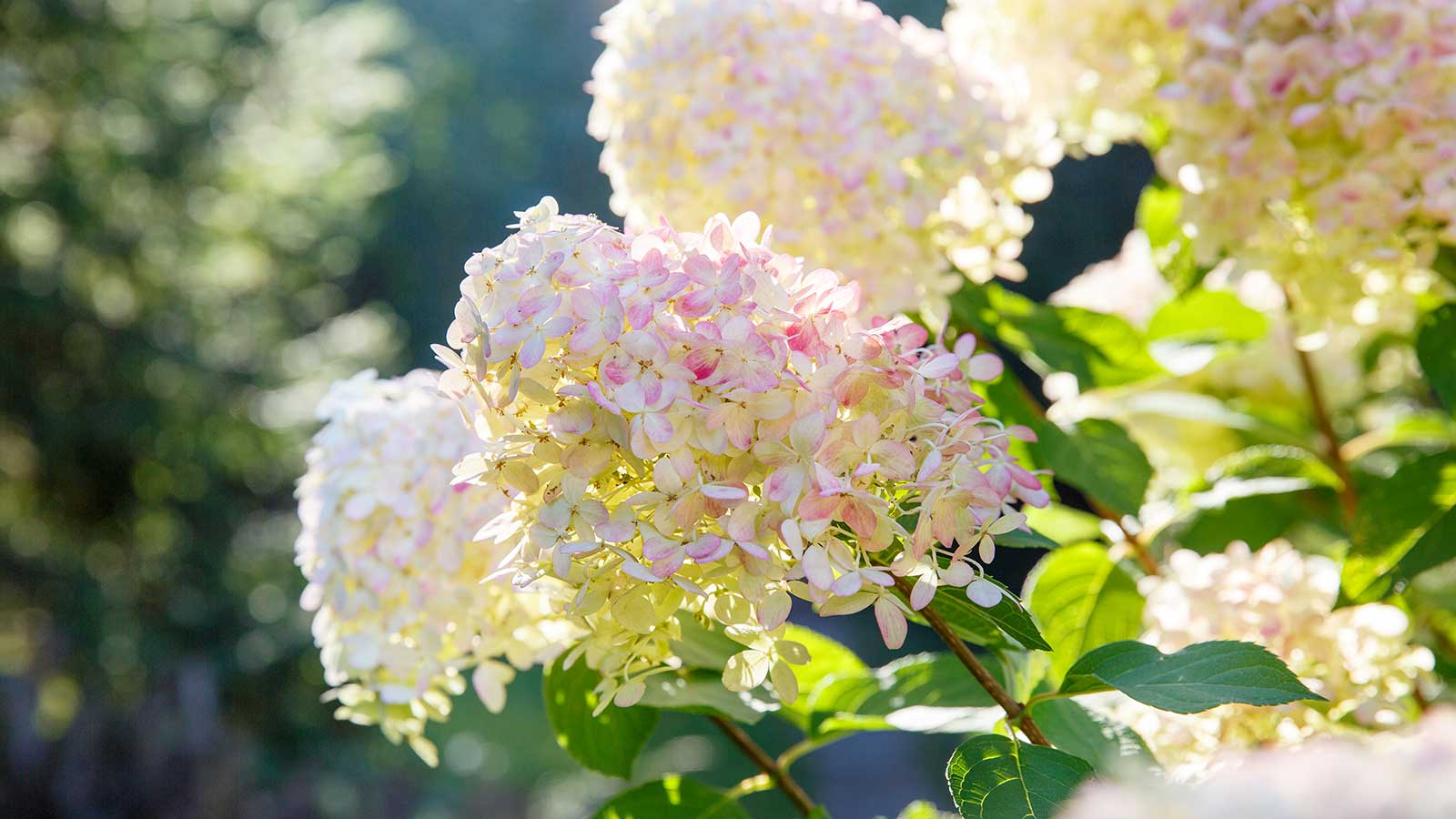

Hydrangeas are great shrubs for backyards. Their huge and long-lasting blooms are beautiful, both amongst the landscape and cut for the vase, and overall, the plants are pretty low-fuss. However, despite their mostly easy-going nature, they're not completely problem-proof. Issues can still arise when conditions aren't quite right – and one such example is yellowing leaves.
In general, yellow leaves on any plant are a sign of stress, but the exact cause can vary. If you're growing hydrangeas and you've noticed a loss of luscious green, the first step is to identify the reason why – then you can make tracks to amend it.
I turned to experts in the field for their insights on the matter, and below, they shed light on the potential culprits, and what to do about them - among them testing your soil's pH. Take their advice on board, and your hydrangea may soon be back to its former glory.
Check for nutrient deficiencies
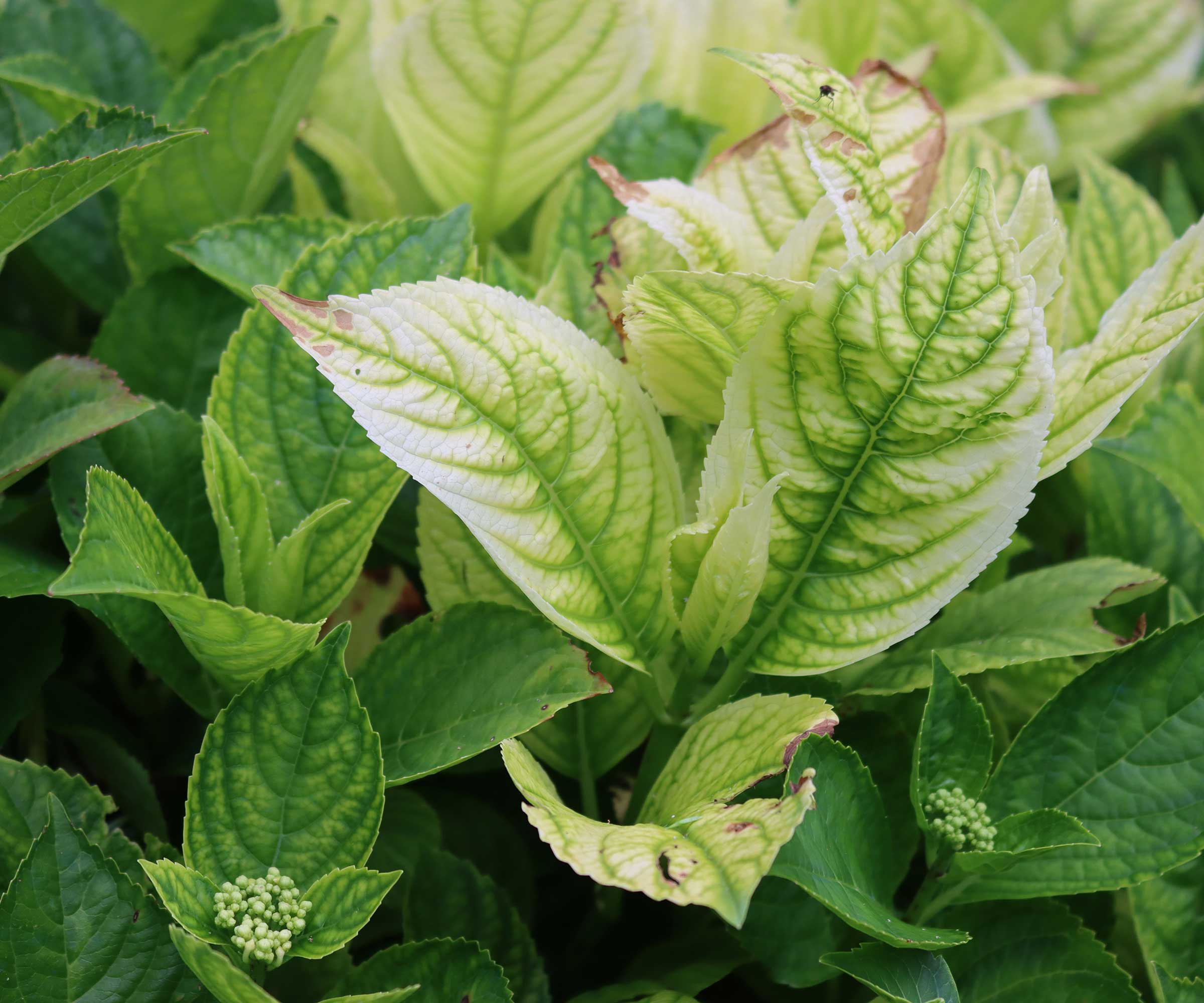
If the leaf veins remain green, chlorosis could be the issue
Plants need adequate nutrients to thrive, which is why fertilizing hydrangeas is important. This is particularly the case for hydrangeas growing in containers, as all that goodness is quickly depleted from potting soil.
Take a closer look at your hydrangea's leaves. Are they yellow all over? Barbara Arnold, senior horticulture designer at Franklin Park Conservatory and Botanical Gardens, says that if this is the case, the most likely cause is a nitrogen deficiency, usually seen on older leaves.
To tackle it, she recommends applying a well-balanced fertilizer (such as one with an NPK of 5-5-5) or compost into the soil.
If, however, it's just new leaves turning yellow with the veins remaining green, a lack of iron is likely to blame, Barbara notes. This condition is also known as chlorosis.
Design expertise in your inbox – from inspiring decorating ideas and beautiful celebrity homes to practical gardening advice and shopping round-ups.
Hydrangea expert Lorraine Ballato says applications of iron chelate can be used as a short-term solution. For a longer-term fix, she says to lower the soil's pH, as an iron deficiency can happen when the soil pH is too high. 'I would strongly suggest a good soil test to see exactly what is happening, since too much iron is as bad as too little,' she adds.
'The proper pH depends on which kind of hydrangea is in question (climbers, big leaf, oak leaf, etc.),' Lorraine continues. 'The soil test will tell you what you have and then a gardener can take action. A local independent garden center is the best place to get the right advice (it is geographically dependable) after you have the soil test results. It is also where you can buy the right product.' Always follow label directions when using any product – especially fertilizers, she notes.
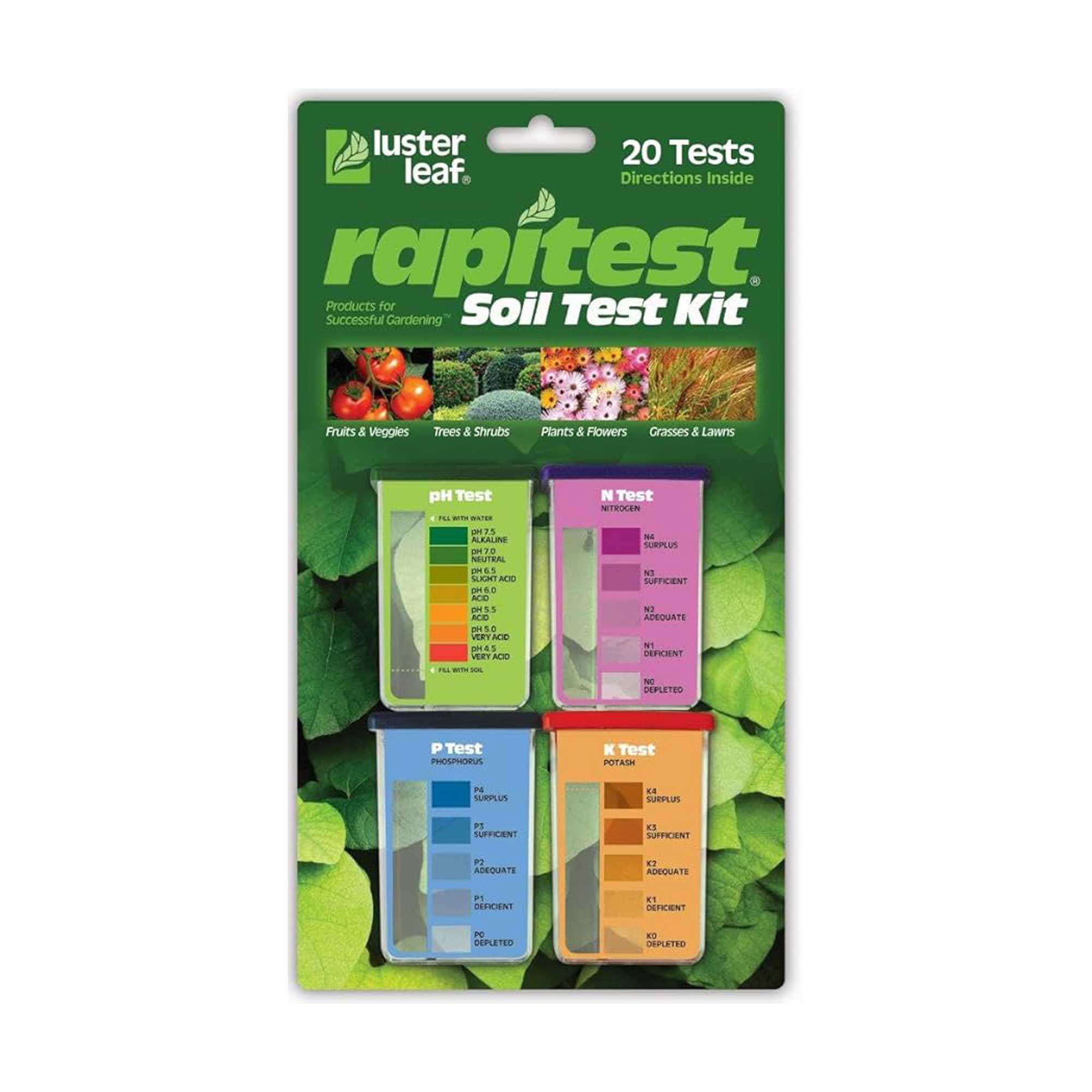
Check the soil's pH, nitrogen, phosphorous and potash levels quickly and easily at home with this kit.
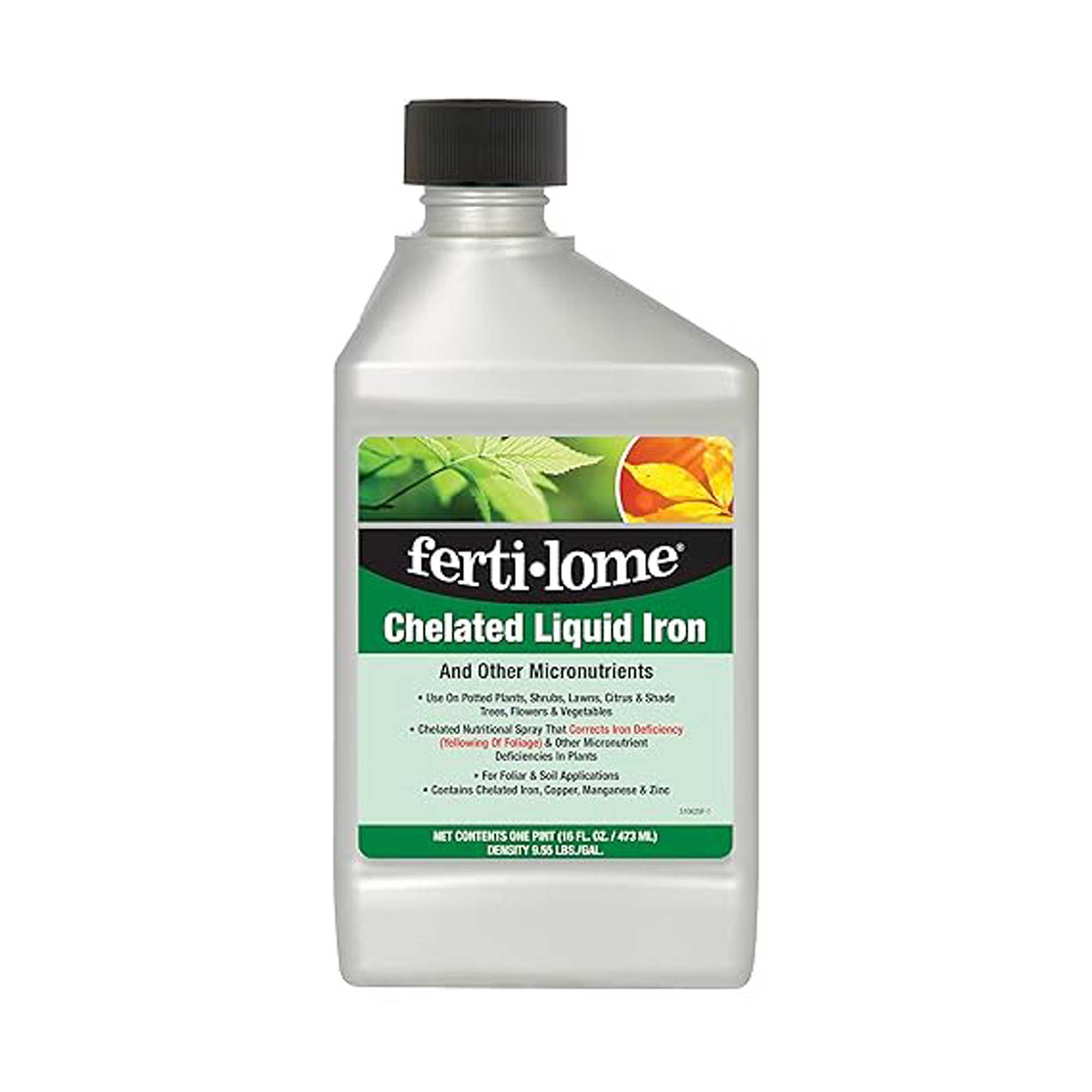
This concentrated liquid iron can be used to treat iron deficiency in plants – simply dilute with water and use as a foliar spray or for soil application. It also includes other micronutrients.

Barbara Arnold, senior horticulture designer, has dedicated more than 30 years to the Franklin Park Conservatory and Botanical Gardens in Columbus, Ohio. Throughout her tenure, she has taken on a wide range of roles, including designing garden and horticultural exhibits, overseeing landscaping installation and maintenance, and coordinating horticultural programs. With nearly 40 years of experience in the green industry, Barbara’s diverse background spans residential and commercial landscaping, as well as work with public gardens and golf courses, establishing her as a highly respected expert in the field.
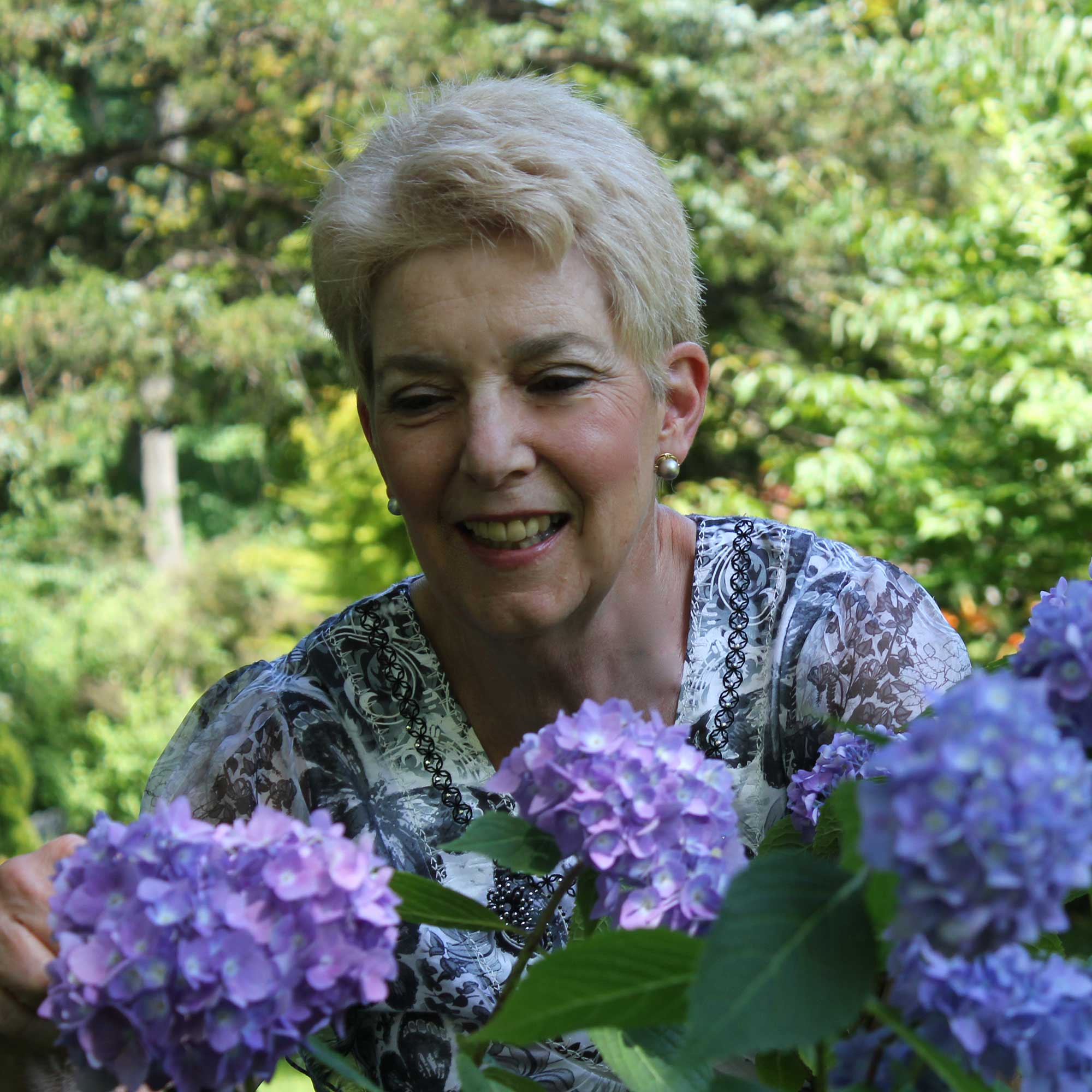
Lorraine is a highly experienced New England horticulturist and the author of the international best-selling book, Success With Hydrangeas. She is an in-demand speaker throughout the U.S. and has been a guest on radio shows from Alaska to Connecticut. She has been teaching classes at the New York Botanical Garden for over 10 years and is considered their resident hydrangea expert.
Rule out watering issues

Under- or overwatering hydrangeas can also lead to foliage discoloration
The other main culprit for yellowing leaves is improper hydrangea watering. Too much and too little can both be problematic.
'Excess moisture from rain or supplemental watering (such as irrigation or using a hose) can lead to root rot,' warns Barbara. 'When this happens, the entire plant, including both new and old leaves, may appear unwell or sickly. You might also notice that the plant feels loose in the soil and can be easily wiggled.'
If poor drainage is the issue, she recommends trying to identify the cause. 'It could be due to downspouts draining nearby, or simply a naturally low spot in the garden.' To remedy this, she suggests either replanting the specimen in the same spot but raised a few inches higher while amending the soil with compost, or moving the plant to a a drier, better-drained area of the garden.
'Remember: watering isn't always the solution and sometimes, it's not the kindest thing you can do for your plant,' she adds. Her advice is to check the soil moisture by pressing your fingers into the soil; 'If it's already moist, hold off.' Lorraine also underlines this point: 'We think they need more water than they do. If the soil is moisture retentive (not swampy!) they will reach back when the sun is off them and rehydrate without human interference.'
Of course, you don't want your hydrangea to totally dry out, either. Barbara points out that, on an underwatered plant, the leaves will droop first, before turning yellow. A plant that is allowed to droop over and over again is under a lot of stress and will cause it to slowly become unhealthy, she warns. Again, check the soil – she recommends watering when the top inch is dry.
You may also need to amend your soil to make it more water-retentive, Lorraine points out. 'Compost is a good starting point.'
FAQs
Do hydrangea leaves naturally turn yellow as they age?
It's important to bear in mind that discolored leaves aren't always a cause for concern, as they can simply be a sign of age. 'Although this is a hardy shrub, it is natural for older leaves, usually located on the inner part of the plant, to age and drop,' says Barbara. 'The plant sheds them because they are no longer needed, and they often turn yellow before falling off.'
Should you cut yellow leaves off your hydrangea?
This depends on what's causing the discoloration, as sometimes amending the issue can restore the lush green hue. According to Barbara, if a nutrient deficiency is the problem, the leaves will turn green again. They can also turn green again if it's a watering issue at play, she adds, but not once they hit a golden, dark yellow. If age is the cause, the leaves won't turn green again and will just drop, she adds.
'If the yellow leaves are really bothering you, they can be removed. They will easily pop off without the need for pruners. If they are not easily removed, the plant is still using them, so let them be.'
Yellow leaves aren't the only problem that can happen to hydrangeas. Look out for hydrangea flowers turning brown earlier than expected, or wilting hydrangeas, too. Don't panic if either of these occur, though – just like with yellowing foliage, there are easy fixes to try.

Holly started writing about gardening five years ago, and she is a regular contributor to Homes & Gardens. She has also written many gardening features for Woman & Home and Real Homes, too. She has previous experience as a professional gardener, where she helped to plant and maintain private gardens. Holly has also looked after allotment plots over the years and loves to grow her own flowers and veggies from seed. In her spare time, she enjoys visiting local gardens, botanical drawing, and tending to her ever-growing collection of houseplants.
